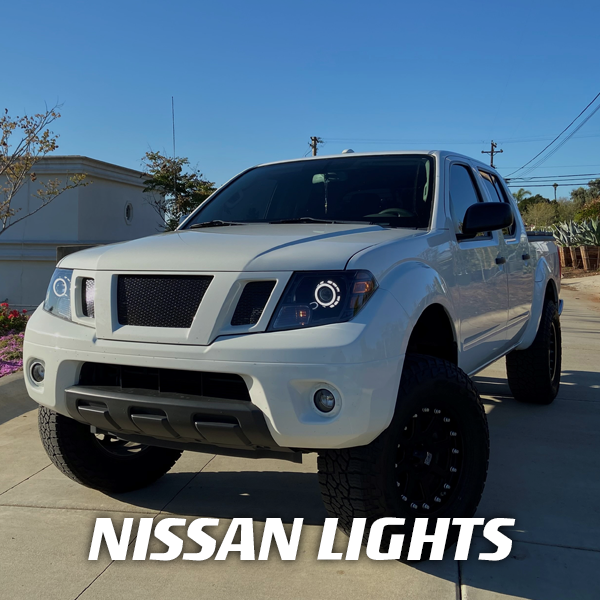Headlights are critical for vehicle safety, providing illumination for driving in low-light conditions and ensuring visibility for other road users. Proper maintenance of led projector headlights is essential to ensure optimal performance and longevity. Neglecting headlight care can lead to various issues, including decreased light output, electrical problems, and safety hazards.
Importance of Headlight Maintenance
Maintaining your headlights is essential for safety and performance, and protecting them from moisture is critical to this upkeep. Moisture inside your headlights can lead to several issues that compromise both visibility and the longevity of your lights.
When moisture gets inside the headlight assembly, it can cause the lenses to fog up, significantly reducing light output and making it harder to see the road at night or in bad weather. This can increase the risk of accidents as other drivers struggle to see your vehicle.
Moisture can also damage the electrical components inside the headlights. Corrosion and short circuits caused by water can lead to headlight failure, which is both a safety hazard and potentially costly to repair.
Regularly inspecting your headlights for cracks, ensuring seals are intact, and promptly addressing any signs of moisture can prevent these problems. Keeping your headlights dry maintains their efficiency and extends their lifespan.
What is Moisture in Headlights?
Moisture in headlights refers to the presence of water inside the headlight assembly in the form of condensation or actual liquid. This issue can occur in various headlights, including halogen, LED, and HID lights, and is typically caused by leaks or poor sealing.
How Moisture Enters Headlights
Moisture can enter headlights through several pathways, such as cracks in the lens, damaged seals, or faulty ventilation systems. Environmental factors, like humidity and temperature changes, can exacerbate the problem, accumulating condensation inside the headlight housing.
Types of Headlight Moisture Problems
Condensation
Condensation is the most common type of moisture problem in headlights. It occurs when humid air inside the headlight cools and condenses on the inner surfaces of the lens. This can happen due to rapid temperature changes, such as when driving through different weather conditions or washing the car.
Water Intrusion
Water intrusion is a more severe moisture problem involving water entering the headlight assembly. This can happen due to significant leaks or cracks in the headlight housing. Water intrusion can lead to more serious damage, including corrosion of electrical components and reflectors.
Common Signs of Moisture in Headlights
-
Visible Condensation
One of the most apparent signs of moisture in headlights is the presence of visible condensation on the inner surfaces of the headlight lens. This can appear as fogging or water droplets, indicating that moisture has entered the headlight assembly.
-
Dimming of Lights
Moisture inside the headlights can cause the lights to appear dimmer than usual. This is because the water droplets or condensation can scatter the light, reducing its intensity and effectiveness.
-
Flickering or Malfunctioning Lights
Electrical issues caused by moisture can lead to flickering or malfunctioning headlights. This can be intermittent or continuous and is often a sign that the moisture has affected the electrical connections or components within the headlight.
-
Corrosion and Rust
Over time, moisture can cause corrosion and rust on the metal parts inside the headlight assembly. This can lead to further damage and decrease the lifespan of the headlights.
Causes of Moisture in Headlights
Poor Sealing
One of the primary causes of moisture in headlights is poor sealing. If the seals around the headlight housing are damaged, worn out, or improperly installed, they can allow moisture to enter the assembly.
Damaged Headlight Lenses
Cracks or damage to the headlight lenses can also allow moisture to seep into the headlight housing. Even small cracks can let in enough moisture to cause condensation problems.
Faulty Ventilation
Headlights are designed with ventilation systems to prevent condensation by allowing moisture-laden air to escape. If these ventilation systems are blocked or malfunctioning, moisture can build up inside the headlight.
Environmental Factors
Environmental conditions, such as high humidity, heavy rainfall, and rapid temperature changes, can contribute to moisture problems in headlights. Vehicles exposed to these conditions are more prone to developing moisture issues.
Risks and Impacts of Moisture in Headlights
- Safety Hazards: Moisture in headlights poses significant safety hazards. Reduced light output and visibility can make it difficult to see the road and other vehicles, increasing the risk of accidents, especially in low-light conditions.
- Electrical Issues: Moisture can cause electrical issues within the headlight assembly, such as short circuits and corrosion of wiring and connectors. These problems can lead to flickering, malfunctioning lights, and complete headlight failure.
- Reduced Visibility: Condensation or water droplets on the inside of the headlight lens can scatter light, reducing the brightness and effectiveness of the headlights. This can significantly impair visibility for the driver and other road users.
Diagnosing Moisture Problems in Headlights
- Visual Inspection: A thorough visual inspection can help identify signs of moisture in headlights. Look for visible condensation, water droplets, or corrosion inside the headlight housing. Checking the seals and lenses for damage can also provide clues about the source of the moisture.
- Testing for Leaks: Testing for leaks involves checking the headlight assembly for any cracks, gaps, or damaged seals that could allow moisture to enter. This can be done by spraying water around the headlight housing and looking for signs of water ingress.
- Professional Diagnostic Tools: Professional diagnostic tools, such as moisture meters and thermal imaging cameras, can detect and locate moisture problems in headlights. These tools can provide a more accurate assessment of the extent of the moisture damage and help identify the exact source of the problem.
How to Prevent Moisture Problems in Headlights
Ensuring Proper Sealing
Ensuring that the headlight seals are in good condition and properly installed is crucial for preventing moisture problems. Inspecting and replacing damaged or worn seals can help keep moisture out of the headlight assembly.
Regular Maintenance
Regular maintenance, including cleaning and inspecting the headlights, can help prevent moisture buildup. Keeping the headlights clean and free of debris can also improve their performance and longevity.
Using Protective Covers
Using protective covers or film on the headlights can help protect them from damage and reduce the risk of moisture intrusion. These covers can provide an additional layer of protection against environmental factors.
Drying Out Headlights
Drying out headlights can be a temporary fix for moisture problems. Remove the dust cap and turn the signal bulbs from the headlight assembly. Use a hair dryer on a low heat setting to gently evaporate the moisture or place silica gel packs inside the assembly to absorb the humidity.
Using Silica Gel Packets
Placing silica gel packets inside the headlight assembly can help absorb moisture and prevent condensation. This is a simple and effective way to keep the headlight dry, especially in humid conditions.
Permanent Solutions
Replacing damaged or worn seals and gaskets is a permanent solution to moisture problems in headlights. Ensure that the new seals are properly installed to create a watertight barrier.
If the moisture problem is severe or the headlight assembly is damaged beyond repair, installing new headlights may be necessary. New headlights with improved sealing and ventilation can provide a long-term solution.
If the moisture problem is persistent or severe, it may be best to seek professional help. Professional mechanics have the tools and expertise to diagnose and repair moisture issues in headlights accurately.
Common Questions About Moisture in Headlights
Q: Can moisture in headlights cause damage to the vehicle's electrical system?
Yes, moisture can cause electrical issues such as short circuits and corrosion of wiring and connectors, leading to malfunctioning headlights and other electrical problems.
Q: How can I prevent moisture from getting into my headlights?
Regularly inspect and replace damaged seals, use protective covers, and ensure proper ventilation to prevent moisture from entering the headlight assembly.
Q: Is it necessary to replace the entire headlight assembly if there is moisture inside?
Not always. If the moisture problem is minor, temporary fixes such as drying out the headlight or using silica gel packets can help. However, replacing the headlight assembly may be necessary for severe or persistent issues.
Q: Can I fix moisture in headlights myself?
Yes, there are several DIY methods to fix moisture in headlights, such as drying out the headlight, applying silicone sealant, and improving ventilation. However, for complex or severe issues, professional help may be required.
Headlights Practical Tips and Solutions
- Regular Inspection: Regularly inspect your headlights for signs of moisture and address any issues promptly.
- Seal Maintenance: Ensure that the seals around the headlight housing are in good condition and properly installed.
- Use Silica Gel: Place silica gel packets inside the headlight assembly to absorb moisture.
- Protective Covers: Use protective covers to shield headlights from environmental factors.
- Professional Help: Seek professional help for persistent or severe moisture problems.
Conclusion
Moisture in projector headlights is a common issue that can lead to reduced visibility, safety hazards, and electrical problems. Understanding the causes, signs, and preventive measures can help vehicle owners effectively address and prevent moisture problems. Regular maintenance, proper sealing, and using protective covers are essential for keeping headlights in good condition.
Promptly addressing moisture problems in headlights is crucial for ensuring vehicle safety and performance. Whether through DIY methods or professional repairs, taking the necessary steps to fix and prevent moisture issues can extend the lifespan of headlights and enhance driving safety.











